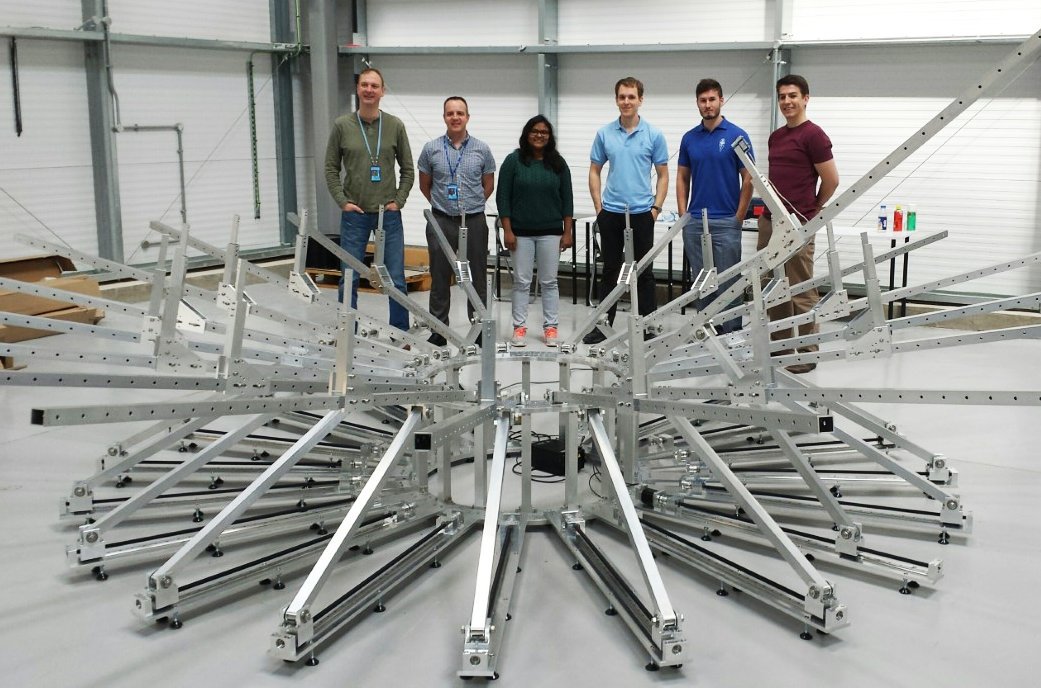

Oxford Space Systems, based at the Harwell Campus Space Cluster, develop deployable structures for the space sector, collaboratively working with global space companies. The company, which has 17 employees, currently works in three principle areas of development: deployable panels, flexible composite boom systems and large deployable antennas.
Oxford Space Systems recently finished its AGP NATEP project; Large Deployable Antenna for Space, which received £150,000 in co-funding. Oxford Space Systems, as project lead, worked with Reliance Precision to design and develop a novel reflector surface for attachment to their existing scalable large deployable antenna (LDA) structure. The project created two jobs within Oxford Space Systems and immediate follow-on development will create one more high value position.
Satellites use antennas for capturing and relaying signals and are deemed strategically important due to their wide applicability to broadband satellite telecommunication services. In a market that is largely dependent on US products, establishing a European supplier of LDAs to meet the demands of European customers in the first instance was seen as paramount by European industry primes and the European Space Agency (ESA).
The innovative NATEP project, to rival the existing metal wire knitted mesh surfaces, developed manufacturing techniques and composite materials. The team explored applying origami techniques to the material, simplifying and reducing mass to increase reliability and utility while cutting costs and production lead-times. The flexible composite material is able to be folded in such a way that enables the reflector surface to achieve a higher stowage efficiency than competitive LDA architectures.
Although not tested in space itself due to budget restrictions, ground evaluation has shown it to be lower in mass, cost, and complexity than the current technology in orbit.
The progress made within the project helped Oxford Space Systems acquire funding from the ESA to integrate the reflector surface to the outer ring structure, and develop the system to a flight-ready status by the end of 2018.
This project has delivered a number of benefits to the aerospace sector and UK Industry; it has the potential to be globally disruptive and could remove the UK from dependence on the USA (sole supplier) for this critical technology, with the possibility of driving down USA pricing.
This project has also created prospect for the UK to become the centre for Large Deployable Antenna technologies within Europe.
Mike Lawton, Oxford Space Systems Founder and CEO said:
“This project put the spotlight on our company – all of the major players in the space industry are in contact about this technology, including a number of overseas potential customers flying to the UK to inspect the NATEP funded prototype. We are thankful for all of the funding and support we have received and look forward to continuing our work to expand the UK’s capabilities in the space sector”.
For more #SMEsuccess case studies, visit the #SMEsuccess homepage here.





